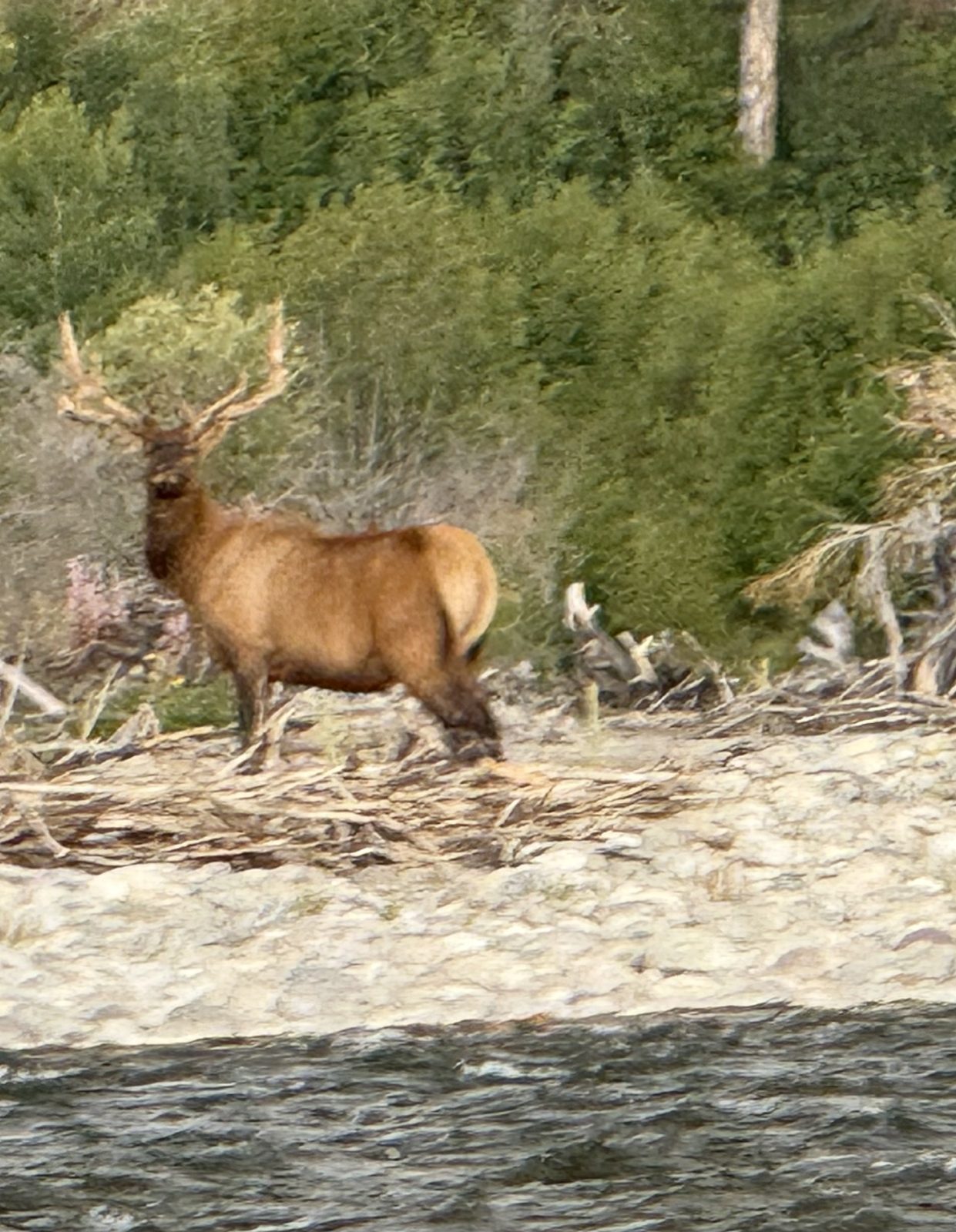
Snake River
Flows from Jackson Lake Dam are at approximately 2,100cfs. Although not strong, PMDs are emerging on most reaches throughout the 11:30am to 4pm hours just about everyday. Hecuba and mahogany duns are also out most days, with the most intense hatches occurring on wetter days. While there is still fish holding well off banks with slow to moderate currents, they are being to shift in tighter, requiring a tighter and more precise presentation. Riffles, seams, confluences, and side channels are the best water to target. Seams deflecting off ledge rock points on the lower reaches below South Park are becoming prime holding water as it usually does this time of year.
Streamers continue to produce well with the mid-reaches from Moose down to South Park and the lower reaches from South Park to Sheep Gulch offering the most consistent action. Moderately sized patterns – both straight shank and jigs – are getting into good numbers and size when fished along banks, structure, troughs, seams, side channels, and confluences. There is a fair amount of back-and-forth regarding whether faster currents are outperforming slower currents or vice versa. Find what is producing on a particular day on the water and stick with it. Go with floating lines or short sinking tips in the INT to 3ips range and variable retrieves.
South Fork
Flows from Palisades Reservoir are at approximately 7,800 cfs. Surface action is inconsistent but worth doing if you are focused on riffles, side channels, troughs, and flats in the afternoon and banks, structure, and parallel drop-offs in the morning on most reaches. There is more consistent top water feeding on the lower river from Cottonwood down to Lorenzo. Infrequen PMDs will be around, although you will see more mahogany duns and BWOs on those days with inclement weather. Moderately sized attractors fished as part of a dry-dropper rig is worth doing on most sections, as opportunistic trout are still eating frequently enough to keep a smile on your face.
Streamers are working everywhere but have been most effective on the lower reaches from around Wolverine down to Lorenzo. Moderately sized patterns are working best, but there are days when larger baitfish imitations are performing better. Banks, submerged structure, parallel drop-offs, and seams are key waters to focus on. Retrieves of moderate speed with hesitations is the default presentation at the moment. Go with floating lines or sinking tips – 12ft in length – in the INT to 3ips range.
Salt River
The most productive reaches on the Salt have been from Grover down to Etna. Low gradient sections have been fishing as well as higher gradients section, no doubt due to the return of more seasonable weather from time to time. Both tricos and PMDs are waning but you will still see a smattering of each around (the former in the morning hours for about an hour and a half and the latter in bits and pieces from around 11:30 am until 2pm. The most consistent action – be it with dries or dropper nymphs fished short – is occurring in eddies, seams, troughs, and along banks with depths of two feet or more.
Flat Creek
Infrequen PMDs will be the main emergence most days except for on those with decent cloud cover and some precipitation, when mahogany duns will dominate. Their adult and nymph imitations are performing well in eddies, riffles, seams, and along undercut banks. Midge adult, pupa, and larva imitations are also producing in the same water.
Despite the fact that we are over seven weeks into the season on Flat Creek, cranefly larva imitations are still producing well along banks and submerged structure. There has also been action in main channel flows around the mid-depth level. Along with craneflies, damsel and dragonfly nymphs are working along banks and seams. Focus on imitative figure-8 and pinch retrieves primarily, along swinging them along banks is also doing the trick.
Yellowstone National Park
Yellowstone River – Solid fishing continues on the Yellowstone in all the usual places as has been the case over the past month and a half. Don’t expect over the top numbers. But do expect damn good size. Smaller mayfly imitations – PMDs, mahoganies, tricos, and BWOs – are working well in riffles and on seams. There can be action on moderately sized attractors in the same water, but there is better production on small-ish mayfly and caddis imitations. These will also work in eddies and along banks with slow to moderate current speeds.
Madison River – Browns have been moving up from Hebgen Lake in good numbers and are just about everywhere from Brown’s Hole to Riverside. Drifting stonefly and egg imitations in riffles, flats, and seams are producing best of all as long as you adjust the depth of your dropper tippet to the water you are fishing. Streamers are producing on the lower gradient sections with slower currents when fished on floating and hover lines or long sinking tups in the INT to 3ips range.
Yellowstone Lake – There has been very decent action on both flats and drop-offs throughout the lake, with flats taking the cake by a smidge. Small to moderately sized baitfish imitations are fishing best, although there has been more than respectable action on damsel and dragonfly imitations when employing imitative retrieves. If imitative retrieves are not doing the trick, go with fast retrieves and a good number of hesitations in your line strips.